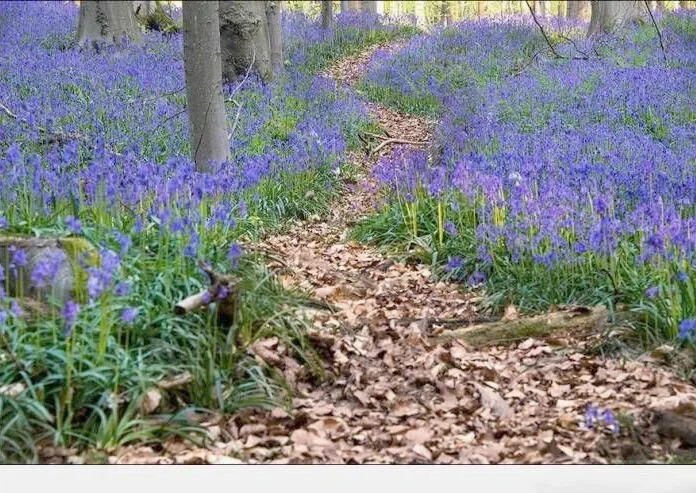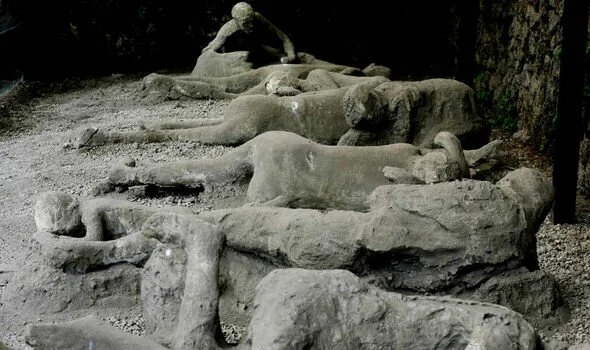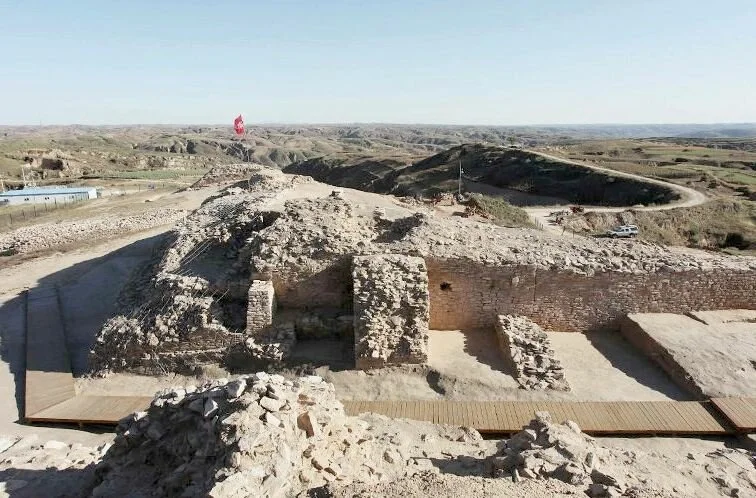Fertile soils in the Amazon basin bring Brazilian farmers up to four crops a year. And they turn the country into an agrarian superpower that is ready to feed the whole world. But there is one problem: will there be a place in Brazil for the tropical forests?
Five in the morning. On the road 163 begins a normal work day – eight thousand pigs from the meat factory "Nutibrras" leave for Hong Kong. The caravan of trucks takes out 150 tons of soybeans destined for Europe. Tons of cow’s liver are sent to Russia. Chicken legs – to Asia. Amazonian fish – to Spain.
Today, like yesterday, Brazil will again try to feed the whole world. Leonard Musi is already a little light on his own plowed field.
Here, on the federal highway, he is considered a soy baron. Only at dawn Leonard has time for an interview. But his mobile calls without interruption. "16 tons to Saudi Arabia, 110 to China, 30 tons to a dairy," he commands. Behind him, on
709th kilometer of Highway 163, wagons with trailers sweep every five seconds. 1500 kilometers to the north to the Amazon. 2000 kilometers to the south to the port city of Santos. Mato Grosso is the geographical center of Brazil. And the center of the continent.
Now here there is an unprecedented metamorphosis: untouched nature turns into a giant factory for the production of food.
Leonard Musi is only forty years old, but he is already one of the food magnates. He started Musi twenty years back with a modest agricultural worker. In 1995, when the soy boom erupted, he, like many Brazilians, went to conquer the Wild West of the country. In 1999, I bought the first soybean plantation with an area of
940 hectares. And now he has more than 100 thousand hectares of land.
As if demonstrating their achievements, Musi pulls the calculator out of his pocket. He pushes the buttons and mutters to himself: "60 thousand hectares of soy, 56 bags per hectare, 55 reals per bag … It turns out," it looks triumphantly, "184 million reais per harvest."
In terms of the euro, this is 54 million.
Here it is, the gold rush of the 21st century.
The largest farm is located in Sinop at 842 km of the federal highway 163. And more like a industrial zone than a hacienda. In warehouses the size of a football stadium are agricultural machines. Here, for example, "atomizer". In the sky, the plane is flying off, to use this unit to spray. In the middle of the hangar is
22-year-old Vinicius Perry. "Our work has nothing to do with the romance of gold prospectors. The main thing is technology and production efficiency. "
When they talk about gold, they mean soya – small straw pods with a few peas inside, which are 20 percent oil and 37 percent protein. Today, soy produce hundreds of types of food products – from chocolate to mayonnaise and vegetable oil. Soya is used in cosmetics, biofuels and cattle. We can say that in the modern world it is no longer bread, but soybeans are the head.
Vinisius Perry is a graduate agricultural technician. Like all local workers, he wears jeans and a baseball cap, but looks like a typical "computer genius" from the Silicon Valley. He pours out phrases like "optimization factor", "efficiency increase", "automated management". It seems that the conquest of the Brazilian "Wild west" has turned into a fashionable start-up. Perry himself calls his method "high-precision agriculture."
What does it mean? With each plantation Vinisius takes hundreds of soil samples. Then, for each square kilometer of the field, there is a special nutritious diet of mineral fertilizers. And after that, he enters the geolocation of data into a computer program that manages a fully automated technique, which also fertilizes the fields according to its scheme. "Every field for me is like patients for a doctor," Vinicius says. "One needs pills for cholesterol, another for more iron, the third for vitamin B12."
He sees his work as a big experiment. It’s like looking for a gold mine. What will be the return? Will the yield increase if the land is properly managed? "The main difference between farmers and gold prospectors is that of our wealth – the land – is inexhaustible," says Vinicius. Like the amount of pesticides that you pour on it, they object to it. "And that too," he agrees.
Thanks to Vinicius’ high-precision approach, yields in the fields of Leonardo Musi grew by 7.7 percent in one year – from 52 to 56 soy bags per hectare. "Plus 13 million reales," he says with a grin. Almost four million euros.
Meanwhile, "high-precision agriculture" is already on the threshold of another technological breakthrough. Thanks to the use of genetically modified varieties resistant to herbicides, one more must to follow the main soybean crop in February. In May, these same fields will be sown with black beans or cotton. If they are provided with artificial irrigation the the drought period. Four crops a year!
The transformation of Brazil into a world leader in the food industry seems inevitable. Soy share accounts for ten percent of total Brazilian exports. The country shares with the United States the first place in the ranking of the largest producers of soy. And it just raised the cumulative yield of soybeans to 95 million tons per year. To meet the growing demand, the cultivated areas are expanded at the expense of local savannas. And they have no equal in the world in species diversity.
In terms of exports of beef, Brazil is number one in the world. On export of coffee, fruit juices, poultry meat and sugar – too. Agribusiness gives almost 25 percent of GDP. And the richest man in the country, Jorge Lehmann, being one of the consortium of investors
3G Capital, owns shares in the giants of the world food industry: "Kraft Heinz", "Burger King" the beer empire "InBev".
30 years ago the state of Mato Grosso on the edge of the Amazon was almost deserted. On its entire territory the size of two Germany would not have accumulated a million people. Federal highway 163, the construction of which was planned in the 1970s, even under the military dictatorship, was conceived just for settling Mato Grosso. It pierces the staff with an arrow, stretching for 4,500 kilometers from the far south of the country to the Amazon itself.
At the same time, hundreds of kilometers of the road. But this is for the best, say. even more agro-industrial enterprises, and then millions of tropical trees will be cut down. However,, for the farmers themselves and the agrarian companies this long-term construction is a catastrophe. Because of this, Brazil loses billions of dollars a year. Ecologists and farmers agree on one thing: the federal highway 163 is not just a regional highway for a long time, but the most important highway of the continent. They diverge only in assessing its usefulness. For some, this is the way to the abyss, for others – the road to a brighter future.
At 840 km of travelers, giant agrarian "temples" are met: elevators the size of a football field, each of which stores 250,000 tons of soy and maize. All major international wholesale companies.
Trucks are constantly bringing new lots of soy. And then comes the "moment of truth". From each lot a sample is taken for verification – 100 grams. Controller Jackson sits in a tiny laboratory with a magnifying glass in his hand. Next lies the verdict of a farmer. Jackson measures the moisture content of the grain, the acidity level, evaluates the presentation and checks the samples for 20 possible defects. One batch of soy can enrich the supplier by 100 thousand euros. Or leave with nothing.
The Chinese are excellent customers, he says. They need only one thing – large volumes and standard quality. A transgenic soybean or not, they do not care. Not that the Europeans. For them, it is necessary to select soybeans, grown by traditional methods, the farmer is indignant. With pork, poultry and beef – the same story. Europeans give me the meat of cattle, which they are fattened according to their norms. The Chinese – they take everything. And in huge quantities. Transgenic varieties provide almost 85 percent of the Brazilian harvest.
In Mato Grosso, people are now talking about the construction of a 2000-kilometer railway line for Chinese money. It will connect the agricultural centers on route 163 with Santarém (a city on the Amazon in the State of Pará) or with the Atlantic ports in the state of Maranhão.
When the rise of the Brazilian economy began only ten years ago, and the first million tons of soy for mixed fodders went to Europe, politicians and industrialists wondered: why do we supply only forage for other people’s livestock? Let us ourselves produce meat for the whole world!
In the same period, the "meat appetite" of China sharply increased. And areas along the route 163 – the best place in the world for cattle breeding. The perfect combination: plenty of water, sun and feed. And there is enough room for everything, says Iralda Ebertz.
In 2006, a pensioner Iralda Ebert lived in the state of Santa Catarina and did not know what to do. And then the former employer from the food concern Sadia, where Ebertz worked as an agronomist, made him a tempting offer: if Iralda undertakes to build the largest pig farm in the country, the concern will provide him with livestock, feed and medicines. And it will be guaranteed to purchase 500 thousand pigs per year.
"Then it seemed to me that it was too much," Ebertz admits. "Now I see that I could sell five times as many pigs." We will expand. "
A plot of 1300 hectares in the district of Tapura Ebertz and its partners were almost for nothing. The former pensioner built here 15 large pigsties – for 40 thousand heads. And over six years it became the largest pig-breeding company in Brazil. Now he is president of the Association of Pork Producers and holder of the honorary title "Pork King".
Ebert leads us to the shipping point. Here, 750 squealing pigs are expelled along the corridor and loaded into trucks for the transportation of livestock. Before lunch, five thousand piglets of the F1 category were taken from the farm to grow: age – 70 days, weight – 26 kilograms. For each Ebertz will receive 16.5 percent of the selling price – 34.5 real, that is, about ten euros.
"I invested 36 million reais a long time ago. My recipe for success is efficiency, scale and low salaries. This is generally the main competitive advantage in Brazil, "he says.
Another secret of success can be seen in the fourth building, in the number two pigsty. The local female worker has a name, protective overalls, rubber boots and a bucket with a hundred sealed bags, each of which has 40 milliliters of pork sperm. But the chief prefers names to numbers, even when it comes to employees. Therefore, Kelian for him – "267M". Under this code are entered in the computer and the results of its work are analyzed.
Keliana herself calls herself an insemination technician: "Now the effectiveness of insemination is 94.5 percent. We must reach 95. Then there will be a prize. "
She carefully approaches the sow, inserts a hose into her vagina and pumps 13 billion sperm, heated to a temperature of 37 degrees Celsius. The farm has experimentally established that manual fertilization is more effective than automated fertilization. These sows have never been seen in males.
"For my boss, the main thing is accuracy," Keliana says. It inseminates 100 sows per day, then they produce an average of 13.4 pigs. In other words, Keliana "makes" 1000-odd pigs a day – more than 400 thousand per year.
They pay her 1,200 reais per month (about 300 euros).
"At least that’s more than the average wage," she says. "It’s better here than at my house in Maranhana."
A trip along the route 163 continues. Course on Sorriso, the informal capital of agribusiness. New slaughterhouses are being built everywhere. At the Nutbras Combine in Sorriso, at the 768th kilometer, 400 pigs per hour are slaughtered. Animals ride on a conveyor belt. They are killed with electric shock, and then they cut off the heads in a phased manner, gutted and cut into fillets. Finished meat products. In Russia – a brisket, for Brazil – ribs and fat. For China, everything else: legs, tails and intestines.
"China is great! – the factory director Lodomiro Pirolli rejoices. "There are no complaints from the Chinese." But Europe is a mess: "Thousands of demands." He waves his hand nervously. All of them are not so: meat with antibiotics, soybean from transgenic seed material …
Pirolli sits in front of 450 subordinates. Those skillfully trim the carcasses. Maria – for 400 rounds, Pedro – 400 guts per day. "We have absolute equality of the sexes here. We have especially developed huge electric scissors carcasses, "says Piroli with pride. "It was difficult to manage with a knife." But now … You just look at how Patricia works: zipper-zipper, zipper-zipper! Up to ten thousand head a month is cut off. "
The city of Sorrisu was built only 29 years ago around the first grain elevators. The officials were trying to attract cheap loans and sites of farmers of the German origin in the south of the country to Mato Grosso. Started settlers from scratch, as the pioneers of the gold rush in California 170 years ago: no schools, no hospitals.
And now the district of SORIZO is the leader in the production of agricultural products in Brazil. The offices of all the largest multinational corporations have opened here. But Sorrisu is also a divided city. On one side of the Route 163 live white trailblazers with typical German surnames: Brouwers and Shifelbayny. Everything comes from the south. They have villas, like on postcards, fenced with high fences with a wire taut over the wire, over which the current is passed. Behind these fences live, as in Rio de Janeiro, cruising between fitness centers and beauty salons.
On the other side of the highway, there are farm laborers from Maranhyan, the poorest state of Brazil. They work for pennies, live in small houses, sometimes without windows. And like they walk in the same blue jeans. But the local broken streets same music as the villas: reggae and the Brazilian forro.
Further to the south along the roadsides of the highway 163, billboards calling for artificial lakes with tropical fish. In 1500 kilometers from the Amazon and in 2000 – from the Atlantic coast. "This is our new boom," says Pedro Furlan. "Sorriso County has already become the largest fish producer in Brazil." Pedro Furlan from the family of industrialists. He built his fish farm in the open field in anticipation of the upcoming rush demand for protein products.
Fish for breeding – mostly large predatory pint – it gets from the reservoirs that is formed as a result of the rotation of the Amazon tributaries.
He has 40 pools of 9000 fish in each. Soon there will appear and miracle fish from the Amazon – giant pyaruku weighing up to 100 kilograms. They are fattened with soy and bone meal to slaughter weight, then they drain water from the tanks and collect the "catch" – 720 tons at a time.
Of course, this "medal" also has a downside: the abuse of antibiotics in the fattening of fish and the oversaturation of river water with fertilizers. "It does not matter," says Furlan. "The mayor is on our side." He himself is a major producer. Re-qualified from soybeans to fish – this is a new gold mine. "
Furlan calculates something on the calculator of his laptop. In the equation – tons of fish, millions of reals, orders from China, the growth of the world’s population to nine billion by 2050.
After completing the calculations, he smiles into a smile. The new advertising slogan for the region on the federal highway 163, 2000 kilometers from the sea, at 7,500 from Europe and 17,000 from China, is already ready. No, it will not be the world’s butter. Not the bins of the world. And not even an international butcher’s shop.
It will be a world aquarium.



